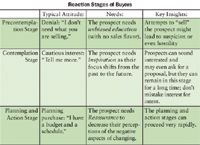Taking Advantage of the Science Behind Marketing
Being strategic-and applying data tools effectively- will go along way in helping to produce analytics that drive sales
Scientists frequently don't understand or value marketing. Many say, "It's too intuitive. Where's the data to prove marketing's impact?"

David Chapin
It would be nice to have good data. The problem is that proving effectiveness or tracing cause and effect is expensive—whether the subject in question is a pharmaceutical compound or a marketing initiative. For DTC blockbusters, a very large budget may not be a problem, but for other life science sectors (such as preclinical services or diagnostic equipment) the research required to pinpoint marketing's effect can cost more than the entire marketing initiative being analyzed.
So if you don't have a research budget big enough to fund what is in essence a Phase III comparative effectiveness trial, is there any recourse? Or do you have to rely on intuition alone?
It turns out that both marketing and purchase behavior have been studied scientifically, so there is data out there, if you know where to look. While there may not be data to guide you through every question (for example, "Will we get a higher ROI by redoing our website, starting a content marketing initiative, or ramping up our social media?"), it can still be a useful guide for some of your marketing decisions.
Here are results from two experiments that cast light on marketing's value, and point the way toward getting the most out of your marketing efforts.
Immunity to Marketing: Fact or Fiction?
You're probably familiar with the common belief that it's possible to "tune out" marketing—in other words, that individuals can be immune to marketing's influence. Many people, in fact—scientists in particular—believe they can control marketing's effects on them. This belief has its roots in the decades-old struggle for the audience's attention. Under the onslaught of marketers developing more sophisticated ways to hijack attention, the audience has had to develop ever-more-sophisticated filters to try to repel these attempts and maintain some control.
Scientists often believe that their training and discipline, with its emphasis on both rationality and proof, provides some sort of special immunity against marketing's pervasive persuasion. This belief leads some scientists to devalue marketing, ignoring its ability to communicate for them, as well as to them.
But recent scientific research (published in the Journal Of Consumer Research) has shown that no one is immune to marketing. This research shows that even subliminal exposure to something as small as a logo has the potential to change not only the audience's attitudes and beliefs, but its behavior as well.
The research was conducted in four phases:
» First, logos were identified that the research subjects associated with particular character traits. As an example, for the subjects in question, one computer company logo was determined to be associated with the character trait of "creativity," while another computer company logo was neutral with respect to this trait. One entertainment company logo was determined to be associated with the character trait of "honesty" while another's was determined to be neutral with respect to this trait.
» The respondents were given a standard test for the trait in question—to measure their creativity or honesty.
» Respondents were then exposed to the logos in question subliminally; they were shown a series of numbers one at a time in sequence and were asked to keep a running sum. Interspersed among the numbers were repeated exposures to one company's logo—shown too quickly to be consciously registered. In fact, no respondents subsequently reported seeing any images amidst the number sequence.
» Upon completion of the running sum exercise, the participants were again given a standard test for the trait in question—creativity or honesty.
The results were significant. Participants subliminally exposed to the logo of a brand associated with creativity exhibited more creative behavior after exposure than participants exposed to the logo of a brand not associated with creativity. Similarly, participants subliminally exposed to logos of a brand they associated with honesty displayed more honesty in post-exposure tests than did participants exposed to logos that had no such connotation.
The subliminal presence of the logos changed participants' behavior, and the effects were present even when the subjects were completely unaware of the presence of any marketing message whatsoever. In the words of the authors: "Brand exposure can shape non-conscious behavior." So, even those who believe that a rational worldview grants them immunity can be profoundly affected by marketing. The authors conclude: "Participants responded to brands by behaving in line with the brand's characteristics, and did so with no conscious awareness of the influence."
This result is quite amazing. You don't have to consciously see a logo for it to be able to change your behavior. This is a clear demonstration that "immunity" to marketing should be considered a myth. Now, there are some caveats to this research, but if subliminal exposure to something as small as a logo can alter behavior, then marketing has significant power.
Is More Information Always Better?
The second body of scientific research worth noting was initiated by J. Prochaska, who had been studying the ways in which people change. This research has strong implications for the ways in which people buy, because buying represents change. After all, if you are going to sign a check for half a million dollars for a piece of lab equipment, modify the lab to accommodate the equipment, go through the retraining process, and change your workflow, this purchase does represent a significant commitment to change.
Prochaska's "Transtheoretical Model," which has been tested in experiments involving tens of thousands of subjects and overseen by many different researchers, shows that people who are committed to change progress through a series of stages. The model outlines six stages, and shows that people at different stages have different needs. For simplicity's sake, I have condensed these stages for presentation purposes; the table shows the needs of buyers as they progress through just some of the stages of the model.

Reaction Stages of Buyers
Even in this simplified view, you can see that prospects' needs change dramatically, from unbiased education to inspiration and finally to reassurance.
This progression stands in direct contrast to typical scientific intuition. The discipline of science places a high value on completeness—science strives for total understanding, for the ability to describe a mechanism of action down to the smallest detail. As a result, scientists often want to tell the complete story. "Oh, if we provide every detail, they'll be sure to buy." This leads to Web pages with paragraph upon paragraph of text and trade show booths dense with copy.
But scientific intuition in this case is not supported by scientifically observed buying behavior. Lengthy websites and dense trade show displays are usually not effective because visitors to websites and trade shows are typically (but not exclusively) in the contemplation stage. Buyers at this stage need inspiration. And inspiration is best delivered in short doses—not through long, detailed, complete stories.
Should You Trust Your Instincts?
As the above examples highlight, there's more science to marketing than you might think. Of course, marketers seldom have the luxury of basing their decisions on the same amount of data typically available to pharmaceutical scientists.
But this does not mean that instinct should be your only guide. There are many published experiments that have shed light on general marketing principles and specific marketing tactics. They're worth seeking out. Because when scientific intuition (for example, to tell the complete story) is at odds with the scientific evidence (to progress from education to inspiration to reassurance), you shouldn't trust your gut.
David Chapin is CEO of Forma Life Science Marketing. He can be reached at dchapin@formalifesciencemarketing.com

The Misinformation Maze: Navigating Public Health in the Digital Age
March 11th 2025Jennifer Butler, chief commercial officer of Pleio, discusses misinformation's threat to public health, where patients are turning for trustworthy health information, the industry's pivot to peer-to-patient strategies to educate patients, and more.
Navigating Distrust: Pharma in the Age of Social Media
February 18th 2025Ian Baer, Founder and CEO of Sooth, discusses how the growing distrust in social media will impact industry marketing strategies and the relationships between pharmaceutical companies and the patients they aim to serve. He also explains dark social, how to combat misinformation, closing the trust gap, and more.